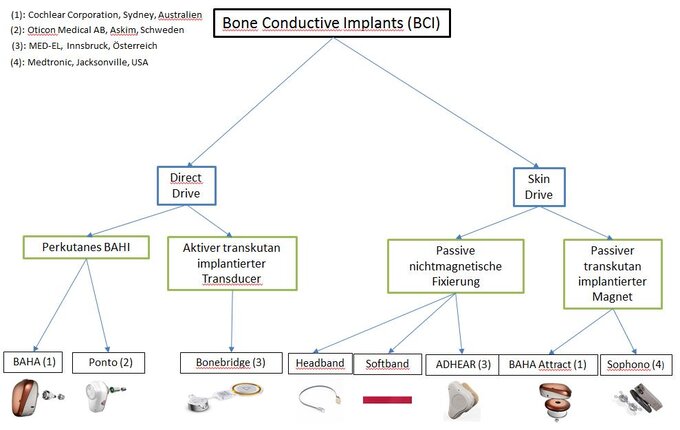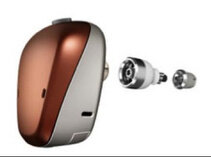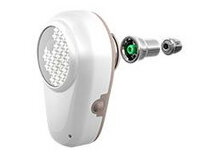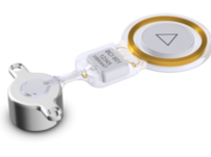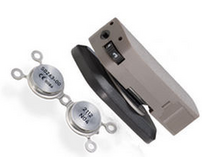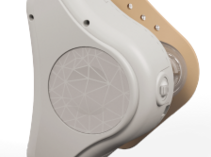Bone-anchored hearing systems
If amplification of the hearing signals via the external auditory canal and the middle ear is no longer adequate, or if it is impossible for a variety of reasons, there is the alternative possibility of amplified hearing via a bone-anchored hearing system (Bone Conduction Implant, BCI, see Fig. 1).
This uses the natural capability of the body to amplify sound via bone conduction. An externally-applied speech processor receives sound in the air by means of an integrated microphone (like a hearing aid), converts it to oscillations and transmits it to the implant. This bridges the auditory canal and middle ear and the sound reaches the inner ear directly through the skull bones in the form of vibrations.
The various hearing systems can be grouped into those which stimulate the skull bones directly (direct drive solutions) and others in which the vibrations are conducted passively to the bones via the fasciocutaneous sheath (skin drive solutions).
The direct drive solutions also offer two different systems:
The percutaneous BAHI Systems (Bone Anchored Hearing Implant, such as Ponto® or BAHA® see Fig. 2+3) consist of a screw-formed implant, protruding out through the skin, which makes direct coupling to the speech processor possible.
Unlike these two, the active transcutaneous system, is completely implanted under the skin – the oscillator, the Bone Conduction-Floating Mass Transducer (BC-FMT), the coil that receives the digital signals from the external speech processor and the demodulator, which converts radio signals to control signals for the BC-FMT (e.g. Bonebridge®; see Fig. 4).
The technically complicated components of the system, in which maintenance, repairs, battery change and technical innovations are to be expected, are worn as a speech processor on the intact skin, like conventional hearing aids, and held on the implant with magnets.
In the so-called skin drive solutions, sound is converted outside the head to vibrations and passively conducted to the skull bones.
The passive transcutaneous systems, which are held by implanted magnets to the externally-worn speech processor, differ from the BAHI systems described above only in that the bone-anchored implant is fitted with an additional magnet plate which holds the speech processor on the intact skin (e.g. Sophono®, BAHA-Attract® s. Fig. 5+6).
That has the advantage that the intact skin is less susceptible to impaired wound healing, but it also means that the vibrations have to bridge over the fasciocutaneous sheath, which limits the performance power of the system.
Systems with passive non-magnetic fixation do not require surgery and, like a conventional hearing aid or reading glasses, can be worn or removed by the patient at any time.
The speech processor in these units is fixed either by external pressure (Softband or Headband) or by temporary adhesion to the skin behind the ear (ADHEAR®).
These hearing systems are used especially by patients in whom ear surgery is not possible because the skull bones are not thick enough (e.g. small children) or in those who have not yet decided to undergo an invasive procedure and want to test hearing with a bone-anchored hearing aid first.
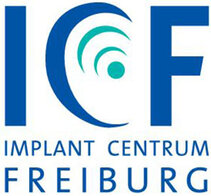
Implant Centrum Freiburg - ICF
Elsässerstrasse 2n
79110 Freiburg
Telephone: 49 (0)761 - 270 72920 / 72810
Telefax: 49 (0)761 - 270 72780
You can reach us by telephone
- Tuesdays from 8.30 a.m. to 3.30 p.m.
- Wednesdays from 1.30 p.m. to 3.30 p.m.
- Thursdays from 1.30 p.m. to 3.30 p.m.
In emergencies, you can reach us by telephone
- Mondays from 1.30 p.m. to 3.30 p.m.
- Fridays from 8.00 a.m. to 12.30 p.m.

